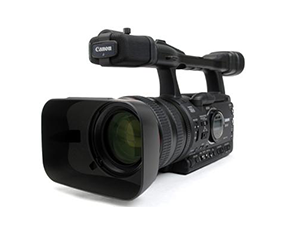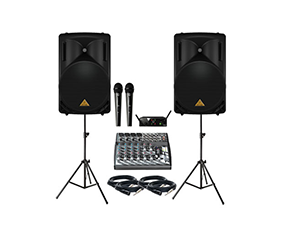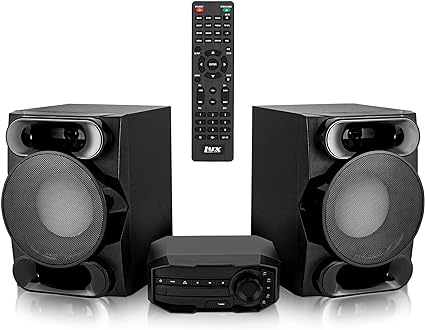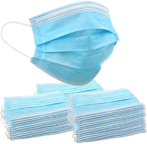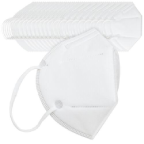This article was written by the New York Institute of Photography, America's oldest and largest photography school. NYI provides professional-level training via home study for photographers who want to give their images a professional look, and perhaps earn extra income with their camera. HOW TO PHOTOGRAPH FOOTBALL
Americans and Canadians love football (the "American" variety, not soccer), and we flock to watch sandlot and Pop Warner football games, high school and college football – and, of course, the NFL and CFL. So, Rah, Rah! Boola, Boola! Let the Games begin!
Football pictures, in other words, are no different from any other pictures when it comes to the Three Guidelines.
For example, look at this football photo by NYI Graduate Mel Wolk. The subject is clear – this picture is about the ferocious battle on the line as Number 11 races through with the ball. The photographer focused attention on the runner by making him big and sharp in the image. Very few objects are seen that distract attention – the image is relatively simplified. An important nuance we can learn from this picture is this: Simplification involves leaving in details that impart pertinent information, as well as eliminating details that distract. In this case, look how much we can tell about this game from a few of the "extraneous" details we see here. The mud and messed up turf tells us that this is being played on natural grass, not Astroturf. The house in the background and the casual demeanor of the few fans seen here tells us that this game is on a local field, not in a Big League stadium. The size and youthful look of the players indicates that this is probably a high school or college game, not a pro game. So the "extraneous" details impart a lot of valuable information here.
There are a number of other sports tips we cover, but these four will suffice for now. Let's start with access. We have noted that you should try to get close to the action. In football, this means on the sidelines if possible. But let's be realistic. In a big stadium at a professional game, you are not likely to be welcomed to the sidelines. Your most likely shot will look something like this:
Don't sneeze at this picture. At a pro game, you're likely to be sitting here too. Don't despair. If you really want to shoot the action on the field, use a very long lens – at least, 200mm and preferably more – and steady your camera on a tripod or monopod. But use some common sense. Every time there's a big play, what is sure to happen? Of course. The fan in front of you is certain to jump up. If your camera is firmly planted in front of you, you'll end up with a wonderful picture of his back! To avoid this, we advise you to set yourself up in the stands where you won't be bothered by fans in front of you. There are advantages to being alone in a section! Another word of advice: If you are shooting from the stands and your tightest image doesn't really get close to the individual players, don't waste good film and your valuable attention on taking pictures that show the players as tiny ants on a big playing field. Maybe you will take a couple to prove you were there. But the rest are simply a waste of time and effort because you won't cherish them or want to look at them again. Of course, in "lesser" games – Pop Warner games, high-school games, and small-time college games – you may be able to walk right up to the sidelines. (As you NYI students know, your NYI Press Pass can help you get on the sidelines even at some of the big-time college games.) The most important point we can make about shooting from the sidelines is this: Watch out! You are standing there unprotected, and you must always be ready to duck when a 250-pound running back comes charging like a locomotive in your direction. Not only is he bigger than you and in full motion, but he's also clad in armor – he won't feel a thing, but you can get clobbered! And your camera will probably be trampled as well. So a word to the wary. Be prepared. Having said that, let's also say that you are now in position to get some great pictures, like this:
Here, we see the ball, the players dominate the frame, and the fast shutter-speed has stopped the action. What we don't see, by the way, is that the ball was not caught, but Pass Interference was called. This picture clearly shows that the call was correct: Number 47 is grabbing the receiver's right hand. Another thing to consider when you're on the sidelines. Don't expect to get every picture of every play. Unlike other sports where you can frequently anticipate the action, football is unpredictable. The play may come your way. Or it may be on the other side of the field. Or it may be 50 yards downfield from you. Realize, in advance, that you can't get ''em all. Your objective is to capture the action when it comes toward you. Not only will the players be bigger in your image, but you may be able to glimpse their faces – and facial expressions help "make" good sports pictures. Of course, the faces of football players are usually hidden behind face guards and other protective gear and shadowed by their helmets, as in this picture you've just seen. So you may be able to get a glimpse of a grimace, or you may not. You can't control this, but it's better if you can see some of the face. As an aside while on the subject of facial expressions, if you want to take a portrait of your football-playing son or brother (or daughter or sister) you want to see his face. In a posed portrait, be sure to take at least some of the pictures with his helmet off. The classic pose is either kneeling down with the helmet on the ground, or standing up with the helmet tucked under one of his arms.
Returning to the sidelines, don't forget that all the action's not on the field. Get pictures of "local color" too. For example, here's a great picture of the pre-game festivities as the team and their mascot burst through a banner onto the field, amidst the cheering of their fans, the exuberance of cheerleaders, an implied festival of balloons, and (judging from the smoke) an explosion of fireworks. This may be the best picture you'll get all day! So don't forget to turn around when there's a lull on the field, and get some pictures of the cheerleaders, the marching band, and the other many other zany festivities around you. And don't forget to get reaction shots too. What are "reaction shots"? Pictures of the agony or ecstasy on the faces of people not in the game at the moment. For example, train your camera on the faces of the players sitting on the benches. They'll be up and roaring with every big play. Go for closeups. You can get some great pictures of the anguish or exultation on their faces. (And they're not wearing their helmets!).
Finally, what about "arty" football shots like this? Here the lens was "zoomed" during the exposure. You can make some very good, very colorful pictures this way. Perhaps, make some award-winners in contests. But they won't make the newspaper. For the photojournalist, this is an important fact. Editors aren't usually looking for "arty" pictures – they want the classic "Who...What...Where" types of pictures. |





























